This post contains affiliate links.
After learning the piano for a while, you’ll start hearing words like arpeggios and scales floating around online and people telling you to practice them as soon as possible to develop your techniques. However, with so many scales and arpeggios out there, it’s hard to choose one to practice first.
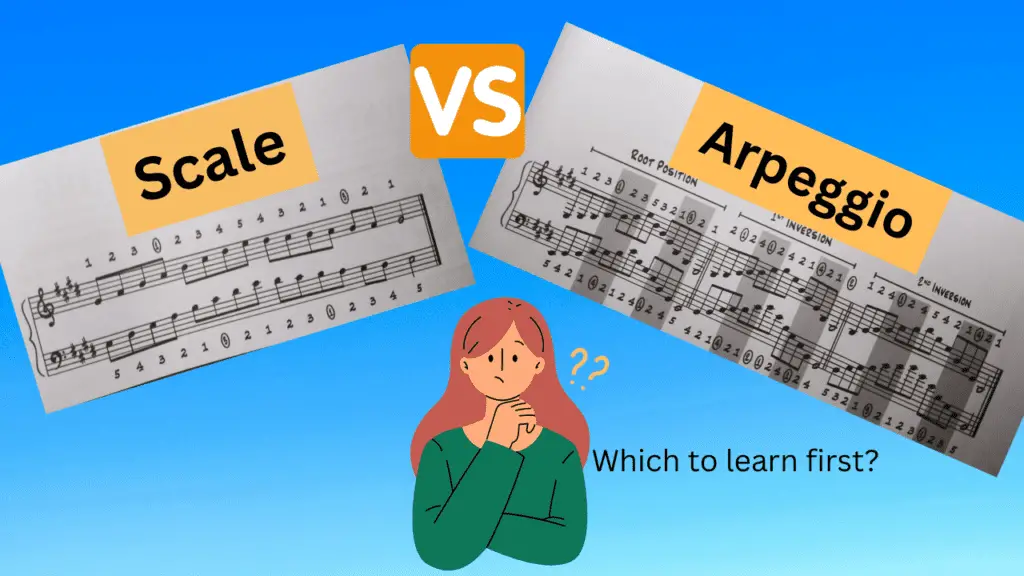
You should learn scales before arpeggios because arpeggios are made based on their respective scales. So if you know your scales, you know your arpeggios. Also, it’s easier to play scales than to play arpeggios because the fingerings for scales aren’t as tricky as for arpeggios.
In this article, I’ll discuss the order to learn scales and arpeggios, as well as other technical exercises to practice on the piano.
Finally, there’s a reason why all piano teachers will have their students practice scales and arpeggios eventually. I wrote an article on the reasons why every piano player should practice scales and arpeggios.
What are scales and arpeggios?
For those that don’t know or need a reminder, a scale is a set of successive notes following a pattern that you play on the piano. Scales start and end on the same notes. The key signature will tell you which notes to sharpen or flatten in the scale.
For example, take the scale of E Major. The E Major scale has 4 sharps F#, C#, G# and D#. These 4 sharps are present in the key signature. You’ll start with an E and play every note up to the next E, so what you play is E F# G# A B C# D# E
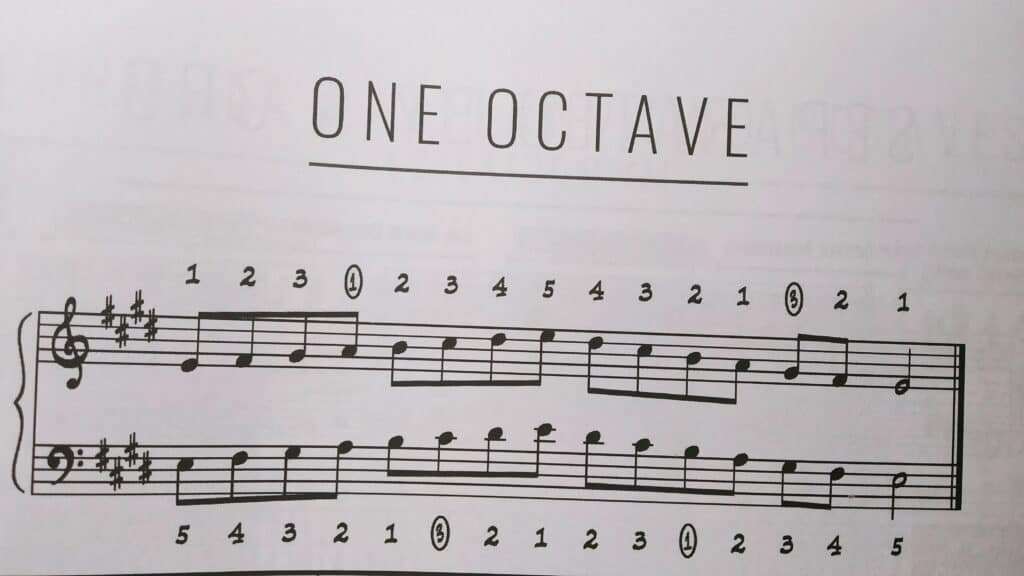
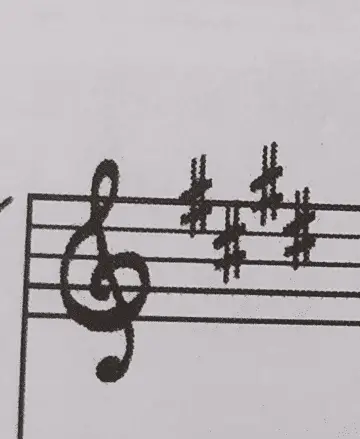
On the other hand, the tonic arpeggio consists of 4 notes from its respective scale: the root (1st), the 3rd, the 5th and the root again. Arpeggios are played one note at a time. Taking the example of E Major, its arpeggio is E G# B E.

The order to practice scales and arpeggios
Because an arpeggio is made based on its respective scale, you should learn them in pairs. So when you learn a new scale, also learn the arpeggio based on that scale. This makes it easier to memorize them.
So for example, if you’re learning the E Major scale, take the time to learn the tonic arpeggio of the E Major scale also.
Now on the order to learn scales, that is which scale to learn first, you can either choose to follow the Circle of Fifths or the RCM/ABRSM syllabus:
Circle of Fifths
The circle of fifths is an intuitive diagram that organizes all major and minor scales. As we can see, the clockwise direction of the circle contains all the scales with sharps while the counter-clockwise direction contains all the scales with flats in them.
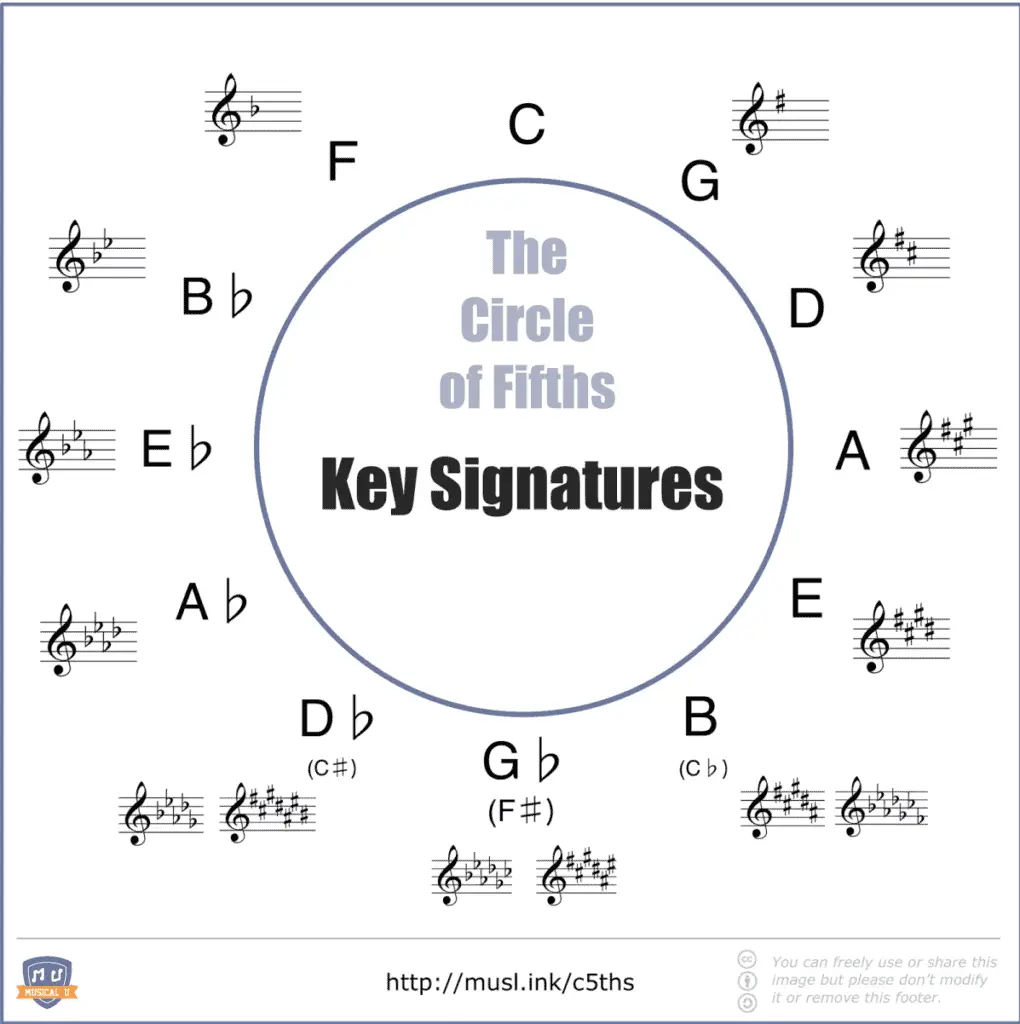
To practice scales, you don’t need to understand the rules of the Circle of Fifths or how it works exactly. Simply follow this order when learning scales:
- Start with the major scales (outer circle)
- Learn the C major scale first since it has no sharps or flats
- Then go clockwise and learn all the scales with sharps up to E Major (G D A E major scales)
- Afterwards, go counter-clockwise and learn all the scales with flats up to Ab major( F Bb Eb Ab major scales)
- Learn the Db Gb and B major scales last.
- Finally, learn all the minor scales in the same order as the major scales.
Don’t think just because we learn the C Major scale first means that it’s easy. Surprisingly, even long-time piano players have trouble with it. Check out the reasons why is this article Why is C Major the Easiest and Hardest Scale to Learn?
RCM/ABRSM syllabus
Alternatively, you can learn scales following either the RCM or ABRSM syllabus. Both the RCM and ABRSM are world-renowned music programs and so their orders for learning scales are decided logically.
The RCM, for example, has 10 levels going from 1 to 10. At level 1, you’ll be playing scales with few sharps and flats slowly while at level 10, you’ll play scales with many flats and sharps very quickly.
I prefer to follow the RCM syllabus when learning scales because I’m currently practicing for my RCM exams. Even if you’re not doing RCM exams, following the RCM syllabus for learning scales is helpful just in case you change your mind and want to do the exams.
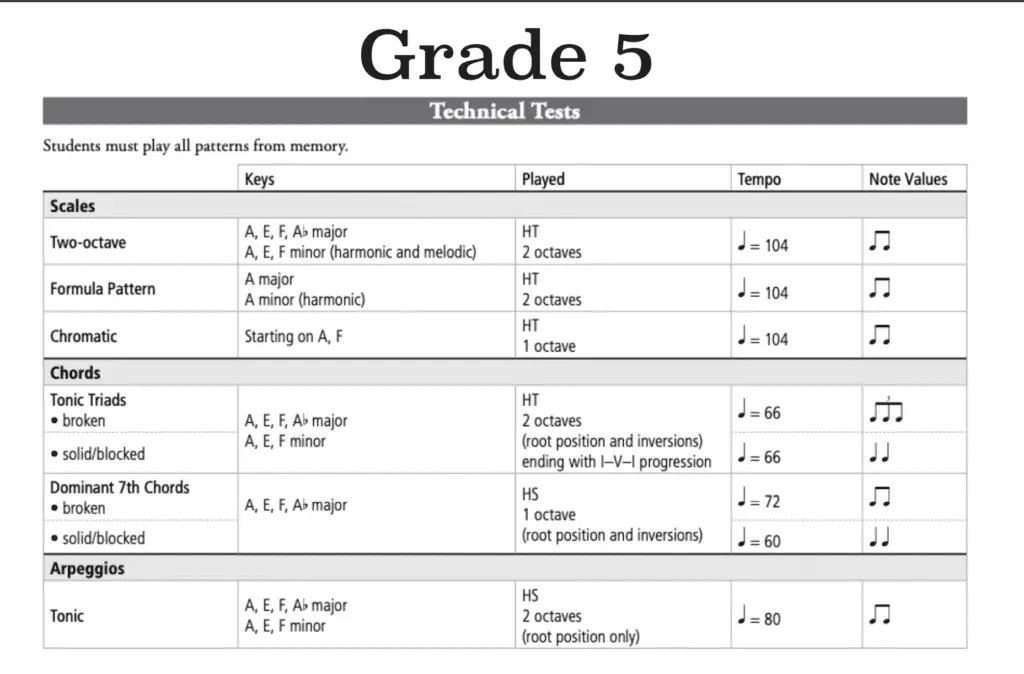
Also, don’t worry about which year’s syllabus you should choose for learning scales. All of them are good and it’s better to just get your hand on a syllabus and follow that to a tee.
Here’s the link to the 2022 RCM syllabus for technical tests.
What else to practice other than scales and arpeggios?
If you open the RCM syllabus, you’ll notice that other than the baseline scales and tonic arpeggios, you’ll also need to do other variations of scales like the chromatic scale, where you play all of the white and black notes in a scale. Here’s an example of the C Major chromatic scale:
Or the formula pattern where both of your hands go up the scale for one octave and then split: your right hand goes up the next octave while your left hand goes down. Here’s an example of the C Major formula pattern:
Other than arpeggios, there are other types of chords that you can practice like the tonic triad that starts on the first note o the scale or the dominant 7th chord that starts on the 5th note of a scale.
As you can see, this can get overwhelming pretty fast. So keep in mind that all of these other exercises are optional, as long as you practice your baseline scales and tonic arpeggios, your techniques will improve just fine.
However, these other exercises can help spice things up when you’re sick of going through the same scales and arpeggios over and over again or if you decide to take the exams and you have to do these exercises as part of the technical test.
While you can find separate tutorials online to learn these exercises, I find it more convenient to have all of these different technical exercises included in one handy book. This is why I recommend checking the book The Piano Tab Method on Amazon. It includes every type of technical exercise for all major and minor scales. It even includes what fingerings you should use when playing scales and arpeggios.
Further reading
Ever wondered why a piano player must practice their scales and arpeggios? Check out this article 7 Reasons you MUST Practice Scales and Arpeggios.
If you want to learn some tips to practice scales effectively or how long you should spend practicing scales every day, check out this article How Many Piano Scales Should You Practice every day?

